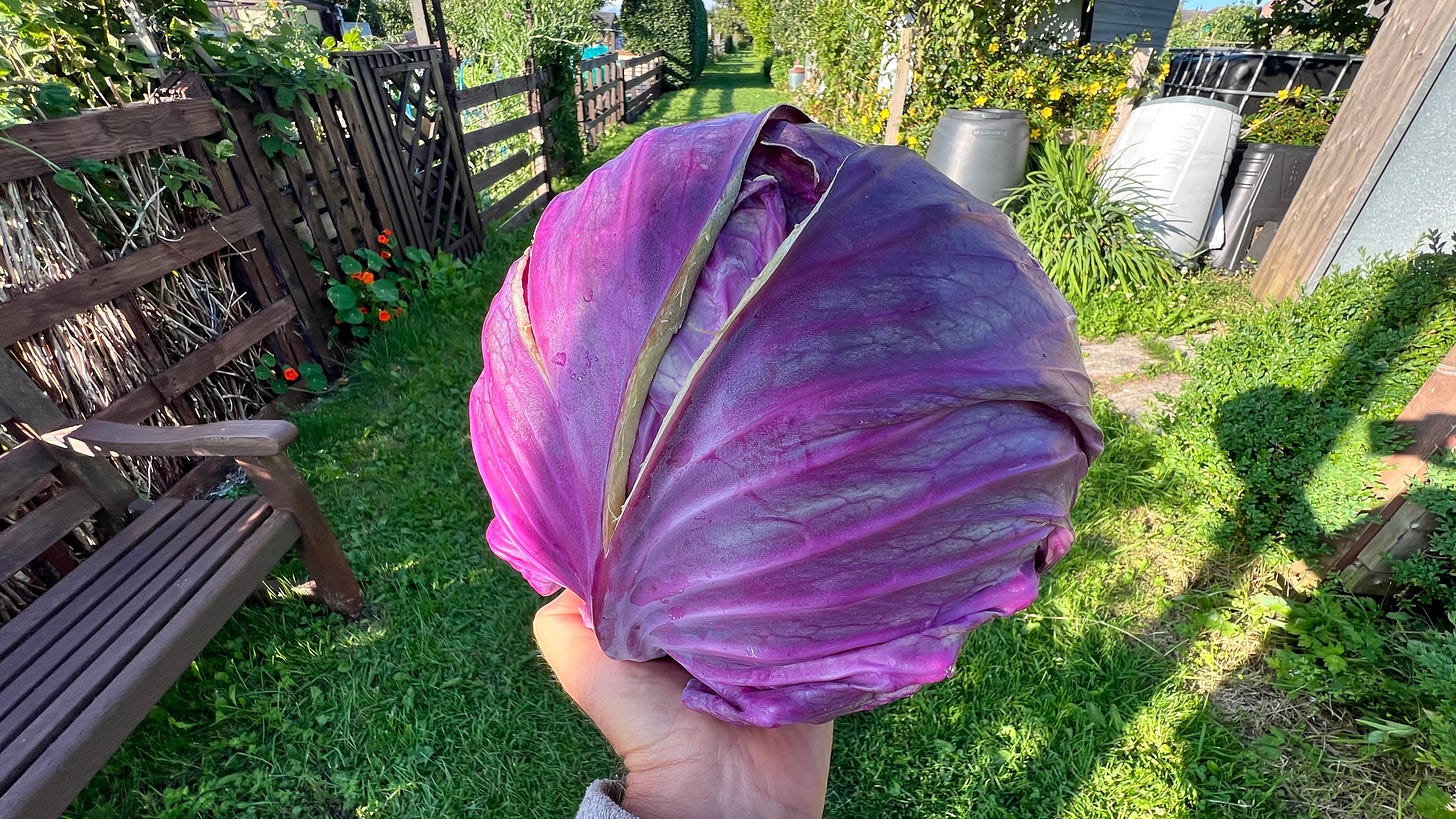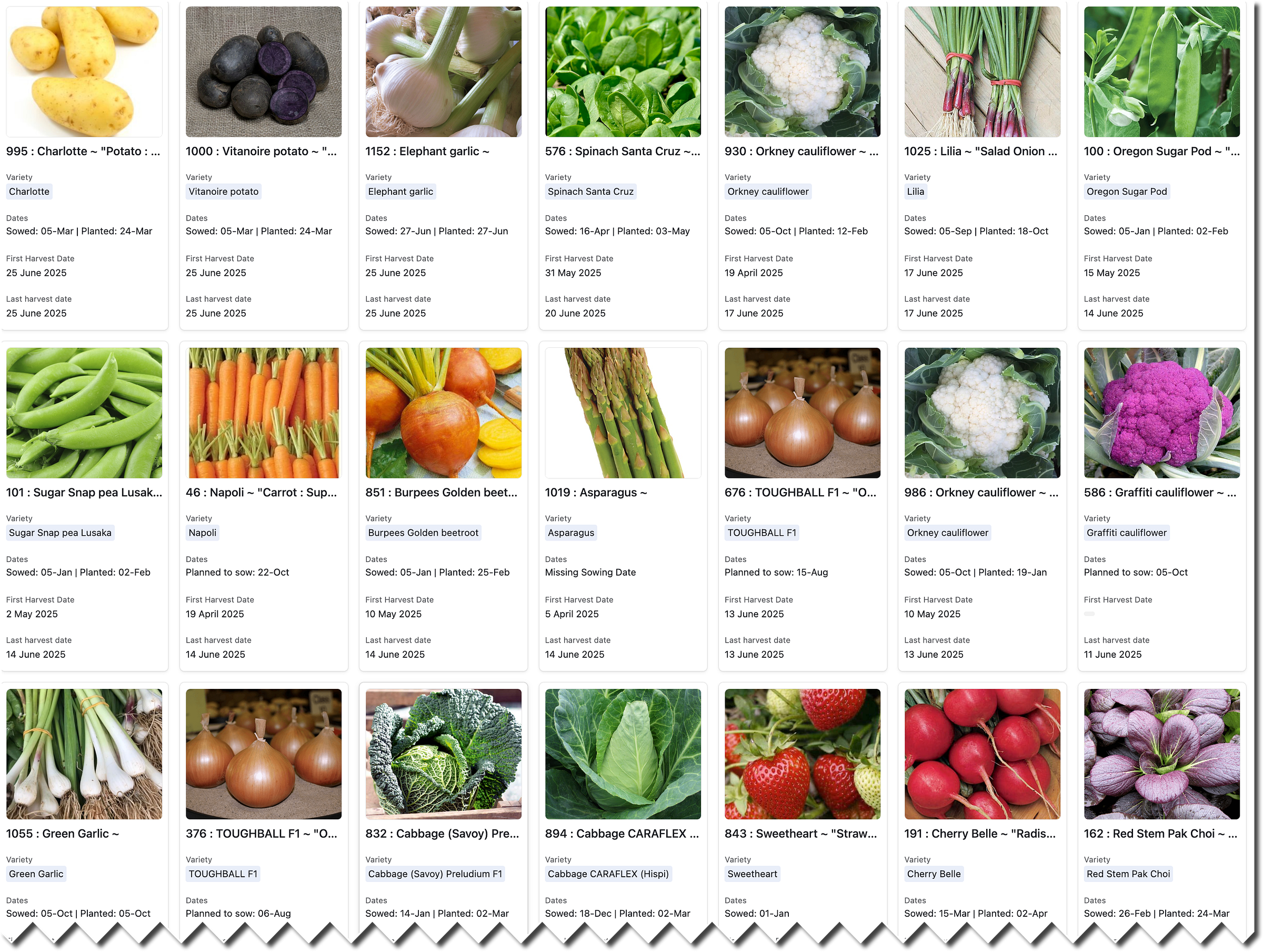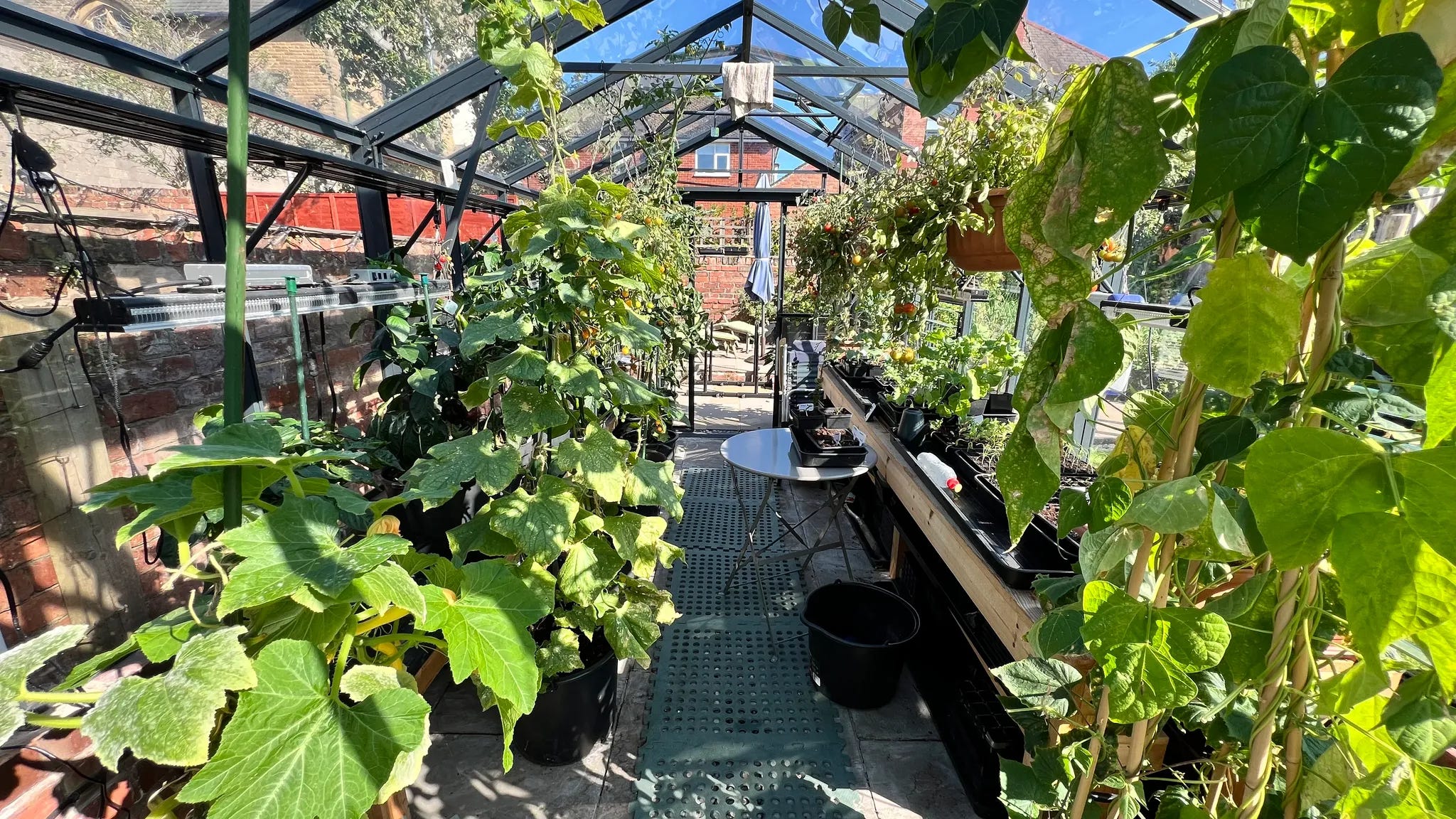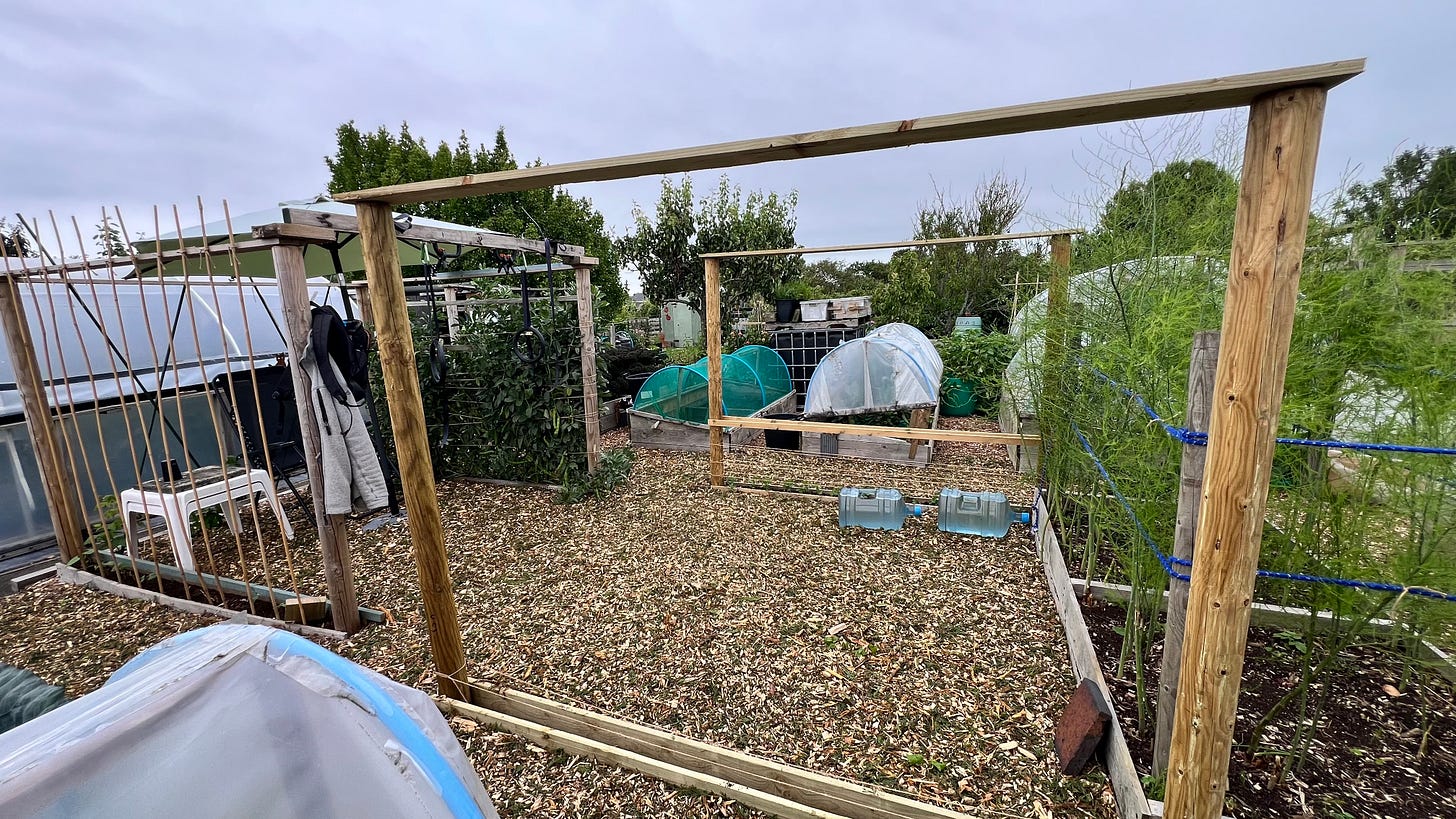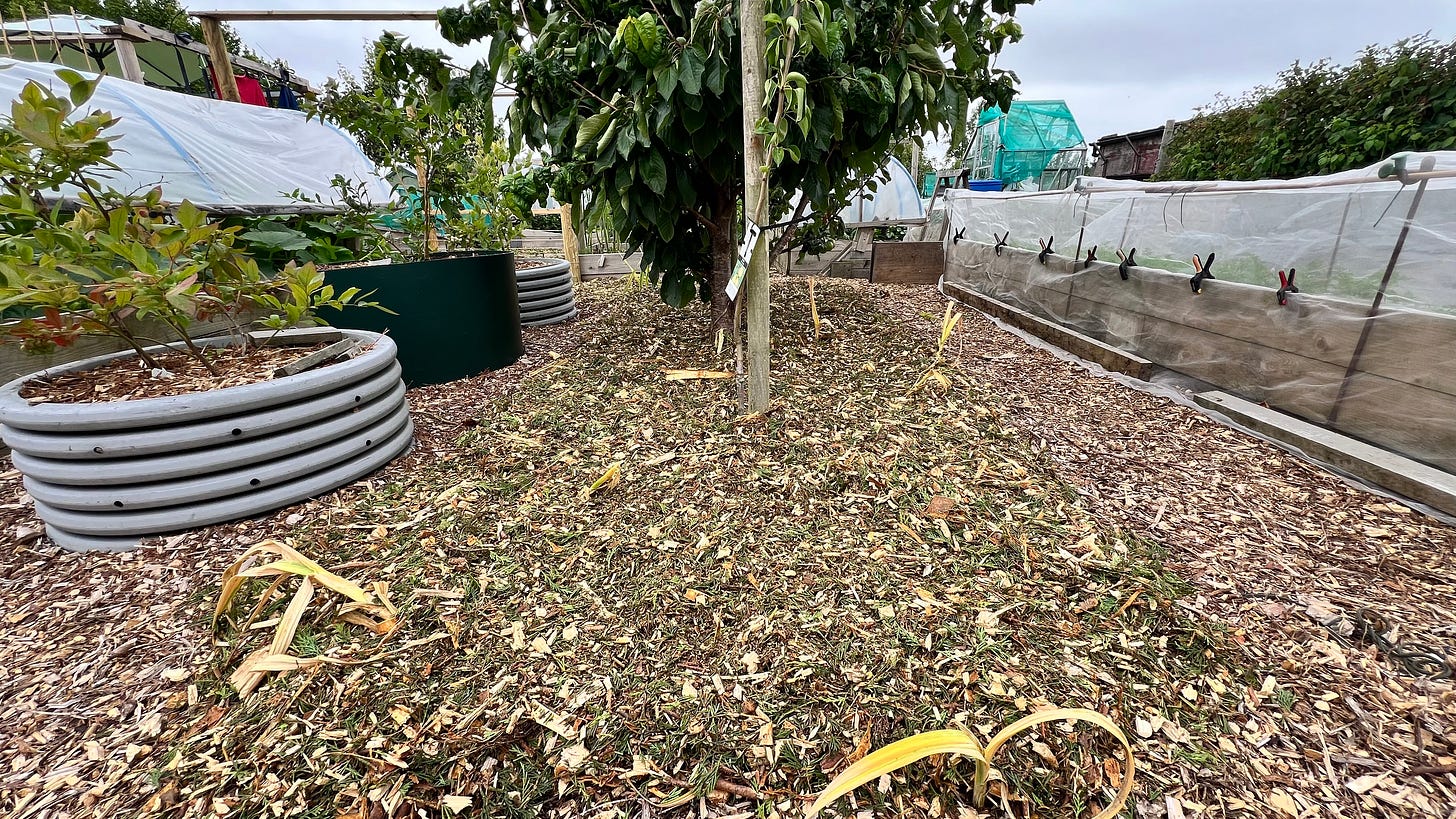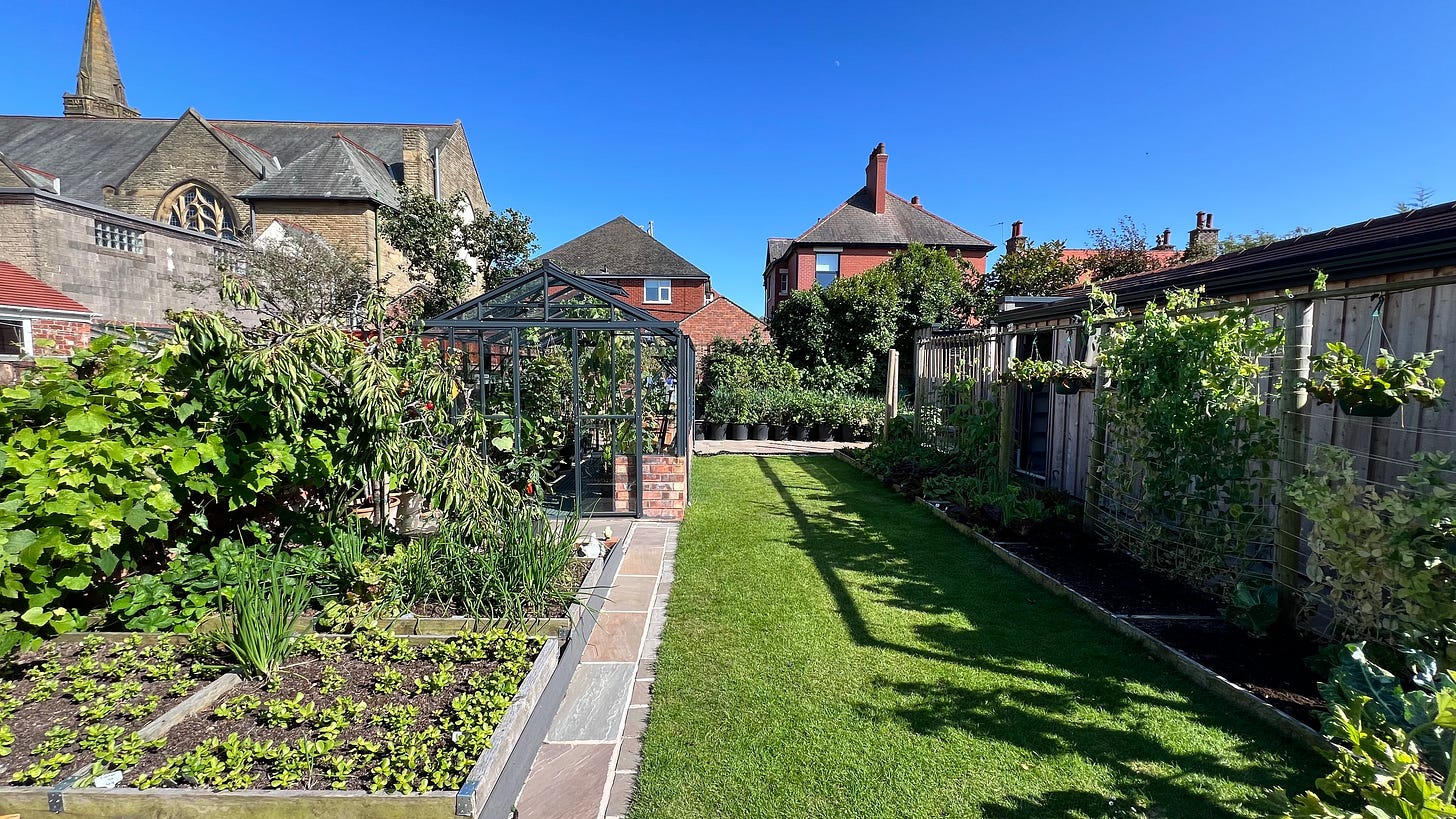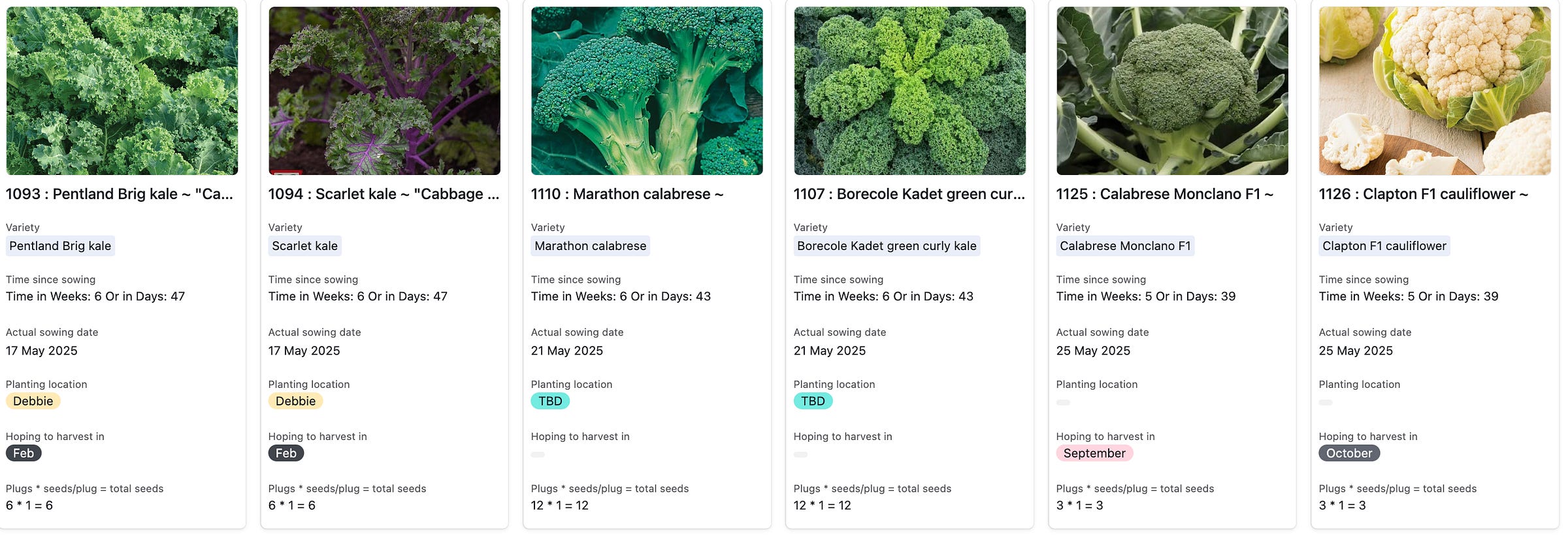Not just gardening
Last week I mentioned that I’d been struggling with gardening injuries and how these were frustrating me, but that I was finally seeing the light at the end of the tunnel. This week I escaped that tunnel and started the rebuilding process and getting back into my usual routine again. At my age the rebuilding is slow and I need to take it steady, if I’m to avoid more injuries, but I thought I would share with you how I structure a typical day, summarised as lots of activity and rest.
I wake up at 6am and at this time of year I’m ready quickly and out in the garden picking a couple of handfuls of berries, then I cycle to the seafront and lock my bike up and take a short walk to a spa hotel where I have a health club membership.
If things work out as planned, I’m the first person in the pool when it opens at 6:30am and my target is to swim a quick 1km, a mix of crawl, breast stroke and old english backstroke. Then I spend 10 minutes in the sauna, swim a few more lengths to cool off and finish off in the jacuzzi for a few minutes. Then it’s back on my bike to ride to Caffe Nero.
I’m usually first in the door at Caffe Nero and I help the staff open up and then spend 90 minutes there, in the window seat that I’ve been sitting in for well over a decade. This is where most of my reading and research gets done, where I wrote my books and where this newsletter is written too. If I have an active day ahead I usually have a small brownie, which is my cake of choice, and readers of this newsletter usually pay for it, via the Buy Me a Cake website.
Back on my bike again, I will then do a quick 10-20 miles, depending on how I’m feeling and how busy my day is going to be. I aim to arrive at the allotment by 10am and I will stop off at Booths supermarket for food. Booths is an amazing supermarket that stocks top quality food, makes their own cakes, bread and pastries, has a great hot food counter, a superb cafe and sources anything they can locally. It’s only a couple of minutes from Booths to the allotment.
I arrive on the allotment, ready for my second rest break of the day, which usually means breakfast in the polytunnel, which will be complemented by a mix of freshly picked allotment fruit, peas etc.
Then I’m ready for some work. I usually try to do at least 2 hours on the allotment, which would have me leaving by 12am, but If I’m busy, I might push on until 2pm. The observant amongst you will notice that if I do 2-4 hours on the allotment on a typical day, then this would add up to a lot more than my usual 7-10 hours of total gardening time. There’s two reasons for this, the first is that not every day is a typical day and the second is that I don’t spend all of my allotment time gardening, I’m also reading, chatting and doing project work.
I often find that these 2-4 hours on the allotment are very active, but they don’t build much stamina or strength, because the intensity is too low, they burn plenty of calories though!
All finished, I like to take a walk around the site, chat to a few people, check out the progress on the other plots, scouting for ideas! I cycle directly home, or via town, which is only about a mile. This week I’ve restarted strength work, so as soon as I get home I do my training, which is just a 20 minute, high intensity session, using a mix of resistance bands, free weights and body weight. I like to do this as soon as I arrive, because then there’s no excuses, but also because then I have lunch and plenty of protein.
After lunch I will water the greenhouse and then have a nap. I nap - in theory - for 34 minutes, 4 minutes to fall asleep and 30 minutes asleep, but I often wake up before the 30 minutes is up. I nap in the conservatory and start napping when the sun passes over the house and the conservatory is in shade. If I wake up before my 30 minutes is up, I lie back and watch the clouds.
The rest of the afternoon is very variable, I will often do DIY, cleaning, writing, research, gardening etc until the grandkids arrive for play time, which happens 3 days a week. They stay for dinner and more play time.
In summer I then usually pop back to the allotment for 30 minutes in the car, I take any seedlings that are ready for planting and collect any rubbish that needs to go in the household bins. We have two large green bins, which we use for woody waste and weeds/green waste that has a lot of seeds in it.
Back at home again by 7pm and I’m ready to watch TV for an hour with Debbie, I have a salad for supper and almost always I will do 20 minutes of - what I call - yoga (really just stretching), while watching TV. It’s not a very varied workout, I try and focus on feet, ankles, knees, hips, with a little spine work, swimming takes care of stretching my upper body.
I end the day with a hot bath, although, if all goes to plan I will be swapping that out for a sauna soon.
As I mentioned this is a typical day, or perhaps it’s better thought of as my default day. This is what I will do unless: I’m hiking, doing a longer bike ride, going out for the day with family, doing a DIY project at home, harvesting, on holiday, ill, or the weather/unexpected events upsets my plans. So it’s often what I do for 3 days a week, but no matter what happens I try to keep the rough shape of my days the same.
This week I’ve followed this daily plan for 3 days, one day I had to use the car instead of my bike because I had to make a lot of trips to the tip (tree pruning) another day I had a medical appointment, so I didn’t go to the allotment at all and cycled to Blackpool instead, yet another day was rained off, so no gardening except sowing a few seeds.
Gardening problems this week
It’s been a fairly good week, but there are almost always problems.
The Flashy Lightning Butter Oak lettuces failed to germinate, fortunately I have fresh seeds ready, these were a poor germinator last month so it’s no surprise
The Canasta lettuces got damping off, this is the first time in many hundreds of sowings of lettuce that I’ve experienced this, overwatering on my part no doubt, due to rushing!
The French beans in the greenhouse have stalled now, so I will be taking those out soon, the ones in the polytunnel are still cropping and the outdoor plants are in flower. So far no shortages, but no surplus either
The blackfly on the golden purslane has almost completely gone now, I’d hoped this wet and windy weather would encourage them to depart and it seems so
I harvested another bed of cabbages in the kitchen garden and this too had mild signs of club root, it seems that whatever introduced club root to the allotment did it to the garden too, which definitely points at compost. The end result is that I’m going to be forced to grow fewer brassicas overall and grow mainly resistant varieties, this might turn out to be a blessing, but right now it means I’ve grown a few trays of kale seedlings that I won’t be planting this year
I decided - lazily - to direct sow a batch of French beans on the allotment, this was a mistake, about half of them have been eaten. I always regret direct sowing, except for parsnips, carrots, potatoes …
Fruit
Although I eat a lot of vegetables - a big plate of steamed veg and a big salad every day - I don’t love veg like some people do. I have a sweet tooth and so I love fruit. Over the years we have been steadily investing in more fruit trees and bushes and this year - for the first time really - I feel we are truly in incredible fruit abundance.
I’m eating berries at least three times a day and it’s a mix of strawberries, cherries, raspberries, gooseberries and blueberries right now, although we’ve also had honey berries and we currently still have mixed currants (which I don’t like). We also have an abundance of dried apples and pears and this week we harvested out first apricots and they were incredible. Our blackberries, plums, pears and apples are looking exceptionally good this year too. It’s hard to describe how incredible this feels to me, even better than my childhood experience, of a garden full of fruit.
Here’s a summary of the fruits we grow, excluding the tomatoes, cucumbers etc.
Open day
It’s our open day on Saturday the 2nd of August from 10am to 2pm and I’d love you to come and visit if you are able. I’m usually available for an hour after 2pm too. Last year it was lovely, but the previous year it rained, but it was still a great day and there’s lots to see and do, beyond visiting our plots. I will post a video and provide more details in this newsletter as the ‘big day’ approaches.
I remember always being slightly nervous about the state on my plot in June, hoping that it looks presentable by August, it usually - but not always - does, last year I had three melon beds and not a single fruit! If you are able, please let me know in the comments if you plan to come, it helps me to plan, but come along regardless.
Old new stuff
Here’s a few reminders of things that are already in the database/book, but that anyone who’s started to follow me recently might not know about.
People often ask me when they should buy seeds, for example should they buy them all at the start of the season in spring, or at the end of the season when they might be cheaper, or maybe even the month before they need them. They also ask where I buy mine from, see my sowing list for that. The best I can do for the ‘when question’ is offer up this information form my database that shows how long seeds of different types typically last, although it does vary a little by variety.
Here’s the full list I’ve sorted this in order of life, longest life first.
Pests of the month
Pests vary by location, so your pests and my pests will vary. This is what I’m dealing with though:
Slugs and snails are still an issue, but less so now as I’ve cleared almost all of my winter/spring plantings and taken the slugs and snails out at the same time. Strulch helps and I’ve been using last years Strulch for the peppers and saving the new Strulch for the melons. Watch out though, fresh strulch can ‘burn’ melon leaves, if the beds aren’t well ventilated!
Carrot fly is out and about now, so all of my carrots are high up on my IBC tanks, or covered. I generally start with a temporary cover of Envirotect while the carrots are establishing and I’m thinning and weeding and looking out for slugs and snails, but once they are established I use a fine net, in a few weeks time. I’m also watering with the Fruit and Veg Protection nematode because carrots are too important a crop for me to risk failure.
Onion fly has arrived and we have had some losses, but so far only on old salad onion beds. Last year was our worst so far and affected the main crop onions and shallots on Debbie’s plot, as a result we are growing most of our onions at home this year and the shallots are on my plot. I don’t net them (so far) but I do water with the Fruit and Veg Protection nematode, but that didn’t help that much last year. I might have to net them next year, which will be a real shame.
Cabbage root fly arrives now and in previous years I’ve lost a lot of brassicas to it. I used to try collars, but they always blow away here, so now I use the Fruit and Veg Protection nematodes. I water the brassicas with it when they are in their pots and then every two weeks after planting. This year I’ve been forced into using a fine net over my brassicas even though I almost always find that the net hides as many problems as it protects from, so I prefer to see problems early through butterfly net (on the allotment) and bird net (in the kitchen garden). In both of my netted frames this week I saw cabbage whites UNDER the nets.
There are a few types of leaf miner, but up north the worst offender is Beet Leaf Miner and so I usually cover my beetroot, otherwise they can make quite a mess of it. They go for chard and perpetual spinach too, which we have in the kitchen garden, but we don’t cover that, we just watch it every day and squash any grubs in the leaves as soon as possible. It’s rampant on the allotment, but not so bad in the garden
Moths and butterflies are starting to make an appearance, although so far I’ve only found a few eggs and caterpillars. At home I don’t cover my brassicas because I usually wander around most days and spot problems fairly early. Once I remove nets and eggs are more in evidence I will start spraying with Bacillus Thuringiensis. This week I’ve noticed the first of these moth caterpillars on the allotment lettuces, where they are a big problem.
Codling moth is about now and it’s a challenging one to deal with, but we have gradually transitioned to varieties that seem resistant. A lot of people mention using Codling moth traps, but these are really only designed to tell you when to spray, they are not effective as a way to prevent Codling moths laying eggs. They might work if you only have a few trees, all close together, but we have 30+ trees, all over the place
For more on pests see my growing guides and this chapter of my eBook.
Summer planning overview
As mentioned above, you can now browse my seasonal guides for each type of growing environment that you have, you can find those here.
First harvests of 2025
The big news this week is the arrival of the first apricots of the year and they are amazing, it’s hard to eat shop bought apricots after you’ve tasted fresh picked ones, although I do like them dried. We also started harvesting the first of the mature red cabbages, which are huge this year, I could have started picking them a few weeks ago, but I have so many savoy and spring cabbages to pick too. I’m also delighted to now have golden purslane back in my salad mixes, definitely my favourite leaf!
We’ve had courgettes for months now, but my main crop plants are now cropping too, although the growth is wild, they have already outgrown their allocated space!
It’s amazing how quickly I get used to such abundance, writing this newsletter reminds me how special it is!
Last harvests
Nothing new this week.
Sowings for the week
Back sowing and rooting tomato side shoots as well as parsley for winter. For many years I’ve also done late celery for winter, but I’m not bothering this year as I want the space for other crops.
Here’s everything sown to date, in more detail.
Not germinated yet
Everything’s germinated that’s going to.
Germinated this week
A few issues this week with failed germination of Flashy Lightning Butter Oak not germinating at all and the Navara are very weak, these are old seeds from DT Brown and they were sold cheap due to their age, they are so so slow to grow, but they do make it eventually. I’m on the lookout for fresh stock!
Pricked out
Everything that I sowed last week, is now pricked out except the Navara, which as I mentioned, are so slow and feeble, they need a few more days.
Potted on this week
I’m growing a few late courgettes, 2 were potted on, one rotted before germinating.
Conservatory progress
The cucumber is still growing well, it’s really amazing me, how well it’s doing and the incredible harvest value it’s delivered so far!
Greenhouse progress
I’m really looking forward to the greenhouse refresh now, it’s still performing well, but it’s boring, now that it’s in harvesting mode. I want new plants in there growing away excitedly.
The early French beans have now finished and I need to take them out. I cut the courgette right back and it’s now cropping again, so I will give it another week or so. The cucumbers are almost done now, so I’m pleased to see lots of growth on the polytunnel plants and I’ve harvested my first fruit off those. As soon as they are in full production I can rapidly replace my old plants with new ones for autumn.
Polytunnel progress
I’ve really neatened the polytunnel up, removed all of those wild side shoots that I missed and given it a bit of TLC. We are harvesting a huge number of tomatoes now, the first cucumbers, loads of celery and beetroot. No melons yet though, which is embarrassing as we have a superb melon grower our site, who’s inspired me to do much better next year!!
The Troughs in the photo have cucumbers, which will soon move back into the greenhouse at home for snacking.
Allotment and garden progress
I’ve been working hard on the allotment this week and having a really great time. My main focus has been on my new seating area, which is hard to visualise right now, because the work is all boring infrastructure. The frames are finished though, the mini beds have been made and the whole area has had about 10 barrow loads of wood chip, so it’s all ready for the finishing touches, hopefully next week.
I’ve also finished planting up my cabbages. I now have enough to last us from now until spring, assuming all goes to plan. From spring we should have spring greens, brussels, kalettes and kale and not long after that we are back on cabbages again.
I’ve also been very busy pruning, all of the stone fruits and also giving the apples and pears a bit of a trim, otherwise I can’t navigate the plot due to the excessive growth.
Pruning the cherries, also means eating a lot and wow, are they lovely!
Last week I replanted my elephant garlic rounds, this week we has a lovely greens rich wood chip delivery, which also smells great, so I mulched the garlic bed.
I also got a couple of hours to spend on the kitchen garden, tidying up tomatoes again - those side shoots! - cutting the lawn and watering.
Finally, I can’t forget tying in the squash, oh my goodness, what a job that is! It seems like every day I’m tying in, growth is so fast, much better than last year!
Planted this week
Lots of important crops this week, as I mentioned the last few winter cabbages, but also the first batch of PSB for spring, the late peas and cucumbers and finally I got around to planting the sickliest, very very neglected hot peppers. We only grow these for chilli jam and they are a very low priority and it shows!
Here’s everything planted this year so far.
Waiting to be planted out
I’ve finally cleared out a lot of old plants that will never get planted. What I’m left with might find a home eventually. Finding club root free ground for the kale might be tricky!
Sowing’s for next week
Nothing next week.
Growing guides for July
This link takes you to all of my monthly guides, where you can find a lot more than just my sowing guides. I particularly like the list of videos produced in the relevant month in years gone by. Click here for July’s guides.
Because I’m always experimenting you might find me sowing a few things that are not on this list, but you can always look those up from the complete list of guides, which you can find here.
Sowing Guide for July
Weekly Harvest
Another great harvest, with samples of our fruit too!
Useful links
Top level links
The website associated with this newsletter
My free eBook - Outgrow : The Art and Practice of Self-sufficiency
My complete gardening database real time access to everything!
My Amazon shop, which lists the gardening products I use, with comments
If you can afford it, you can buy me a cake or some seeds
The most useful lower level links
The reference info section of my eBook, lists what I actually sowed, planted, harvested each month, plus all of the tours and guide videos for that month
Monthly growing guides (what to sow, harvest fresh and eat from the store room each month)
Comprehensive growing guides to every type of veg that I grow
The section of my eBook that covers the basic tools and techniques of gardening (sowing, planting, pests, weeds etc)
The section of my eBook that covers the more advanced tools and techniques of gardening ( extending the season, successional plantings, spacing)
Using grow lights and alternatives to extend the season
Introduction to growing under cover with fleece, low tunnels, polytunnels etc
The chapter of my eBook that covers conservatory gardening
The chapter of my eBook that covers greenhouse gardening
The chapter of my eBook that covers polytunnel gardening
The chapter of my eBook that covers cold frames and low tunnel gardening
The chapter of my eBook that covers extending the season with fleece
The chapter of my eBook that covers outdoor gardening
A guide to my database, how to use it and how to take a copy of it
Useful database links
The types of veg that I grow, roughly ranked in my order of priority
The varieties of herbs, fruit and veg that I’m growing this year
Overview of all of the successions for year round gardening (I don’t grow/recommend all of them) main crops successions are the most reliable
What I’ve sowed so far this year
How long each type of seed typically takes to germinate
What I’ve planted to far this year
What I’ve harvested so far this year
First harvest dates for key successions
The pots and trays that I use with my comments and ratings
The nets and other covers that I use with my comments and ratings
Information on root depth for each type of veg
Information on germination temperature for each type of veg
Information on pesticide use for each type of fruit and veg
List of fruits and veggies that benefit from Mycorrhizal associations
How long seeds last for each type of veg
Which types of veg are heavy, medium and light feeders
Outgrow : The Art and Practice of Self-sufficiency is a reader-supported publication. To receive new posts and support my work, consider becoming a free or paid subscriber.
Outgrow : The Art and Practice of Self-sufficiency is a reader-supported publication. To receive new posts and support my work, consider becoming a free or paid subscriber.










